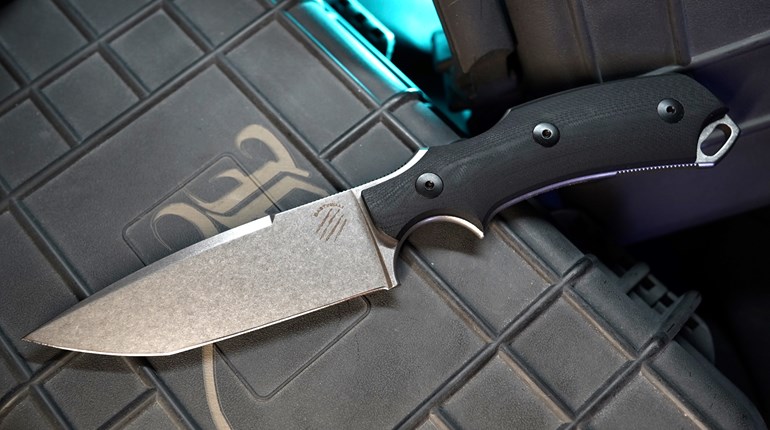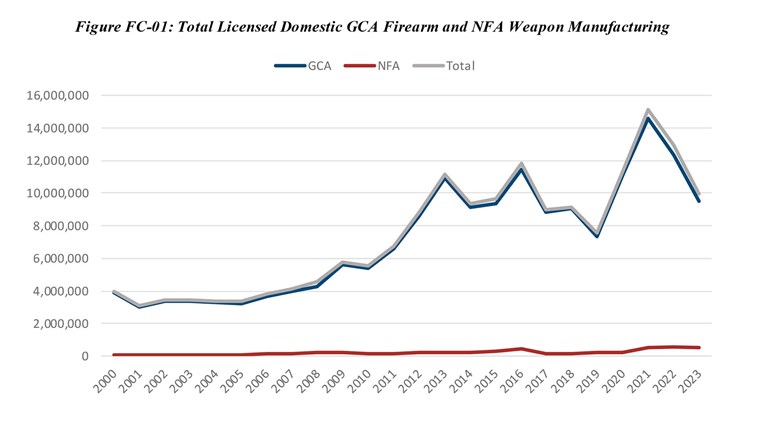
Col. Rex Applegate’s desire to improve the perceived shortcomings of the F-S commando dagger became the catalyst for his later creation: the Applegate-Fairbairn knife.
When World War II began, our military forces were woefully ill-prepared for the global struggle they were about to undertake. This predicament was equally true of our allies in the United Kingdom. Not only were we numerically inferior in men in uniform, but also in fully developed modern weaponry. The major industrial nations of the free world set about correcting these deficiencies; the war ended in ’45 with a radical, very powerful new device developed in a relatively short period of time. An astounding amount of work went into a great many complicated weapons systems, but not a small amount went into one of the simplest weapons available—the knife.
Fighting knives in the hands of military personnel have been viewed as secondary, last-ditch weapons for centuries. It was only in the 20th century that close-quarters battle situations occurred often enough to warrant mass issue of specialized knives with which to fight. In the period between the two World Wars, interest in combat knives grew exponentially, particularly in that cradle of close-quarters fighting doctrine, Shanghai. It was there that legendary martial artists W.E. Fairbairn and E.A. Sykes, of the International Settlement police force, developed advanced fighting systems with and without weapons. For many reasons, police work in this time and place was extremely violent, and these two warrior/policemen studied the matter in depth. With respect to edged weapons, the study eventually resulted in a classic weapon, the Fairbairn-Sykes fighting knife. From prototypes hand-made in Shanghai, a design eventually evolved into a production knife made in Great Britain during World War II. Our Office of Strategic Services (OSS) assigned a young army officer named Rex Applegate to become our expert on these matters. Applegate studied with the Shanghai veterans in the UK and even went on missions in occupied locales. He carried and used an issued Fairbairn-Sykes knife.
At this point in time, the Fairbairn-Sykes knife was state-of-the-art, issued widely to British troops and even copied by several early American special-operations units. But Applegate knew—from experience—that the Fairbairn-Sykes knife design could be improved. A fairly light weapon, it had a double-edged, dagger-type blade that was relatively thin, but optimized for deep, stabbing strokes. There were repeated references to soldiers taking out enemy sentries by surprise with deep single thrusts. This certainly happened, but the slim and graceful Fairbairn-Sykes blade proved rather fragile in field use.
Applegate was by now back in the United States teaching OSS personnel at a secret base near Washington. Fairbairn was with him and they were jointly responsible for seeing to it that a good many Americans got training that was normally not given. In the pressure of getting all this done, the further development of a better knife was somewhat back-burnered, so fighters would have to wait a while yet for the Applegate-Fairbairn knife.
The Fairbairn-Sykes knife was essentially a stabbing tool with a slender blade that would penetrate deeply when used as designed. It could be used for slashing, in the manner of the Bowie knife, but the blade needed a little more heft for optimum results. Also, the handle cross-section was circular, much like a fencing foil. Under stress, some users lost track of where the edges were oriented. During the OSS training period at Camp Ritchie, Applegate frequently discussed improvement in the design of a knife and had a few prototypes built. He was somewhat distracted with developing and refining pistol shooting doctrine, so the knife work had to wait.
By the 1980s, Applegate was retired from active service and hard at work designing equipment and consulting on riot-control training, including gas munitions. Eventually, he came back to a pet project—a perfected combat knife. From a newly built home overlooking Oregon’s Umpqua river he returned to this project. After a few false starts, a fine new Applegate-Fairbairn knife emerged. Like the original Fairbairn-Sykes knife, the blade was 6-inches long and double-edged. It was thicker, slightly wider and less tapered. This made for a stronger knife that was also well-suited for Applegate’s style of multiple slashing cuts. The handle was oval in cross section and adjustable for balance by means of weights in the handle scales. Essentially ambidextrous, the Applegate-Fairbairn knife was quite rugged, quick to use and suited to a number of techniques. Every blade bore the Applegate signature, as well as W.E. Fairbairn’s.
Applegate had prototypes made by knifesmith Bill Harsey and first-production models came from Al Mar knives. The Applegate-Fairbairn knife is still made by Gerber in the U.S. and Boker in Germany, with several options in finish and serrated sections. The basic handle shape is so universally good that it was adapted to a Harsey prototype folder in 1995. Both Boker and Gerber offer Applegate-approved versions of the same folding knife in different lengths. Obviously, a folder is carried in a pocket and one edge is exposed when folded, thereby necessitating a dull outer edge.
I was friendly with Col. Applegate when the perfected knife was first gaining popularity and I recall his glee at several milestones along the way. He was really happy when the folder was stocked by the military Post-Exchange store system, but nothing could surpass his pleasure at seeing the Applegate-Fairbairn knife made in Germany, particularly in view of its design origins.
I have been looking at knives a great deal recently. Certainly, a latter-day soldier would be well equipped with many of them, but I can’t believe that anyone would be better kitted out than with an Applegate-Fairbairn fighting knife—the simplest form of fightin’ iron.






































